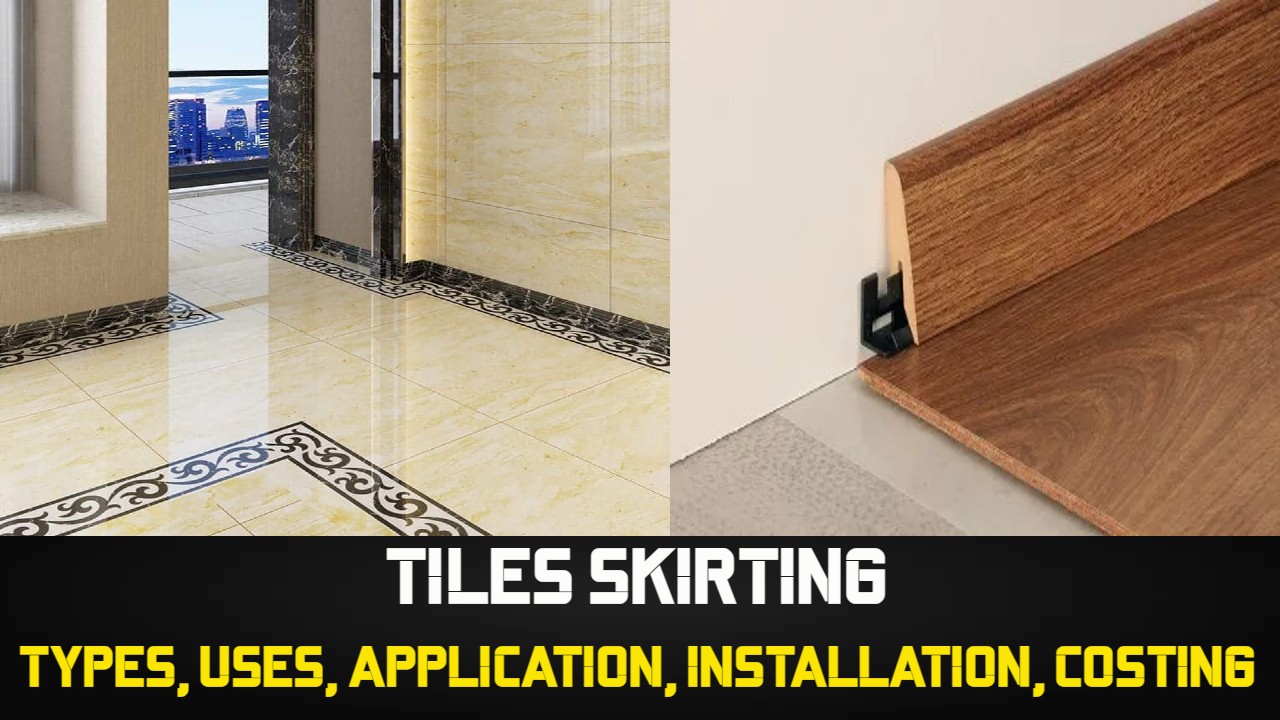Tiles skirting is the practise of installing tiles along the lower part of walls, usually where the wall and floor converge. It acts as a barrier to stop markings and scratches from being made on the wall by things like furniture, vacuum cleaners, and foot activity. The overall aesthetics of a space are improved by the aesthetically beautiful transition that tiles skirting provides between the floor and the wall.
Contents
- 1 Definition of Tiles Skirting
- 2 Types of Tiles Skirting
- 3 Uses of Tiles Skirting
- 4 Application of Tiles Skirting
- 5 Installation of Tile Skirting: A Step-by-Step Guide
- 6 Maintenance of Tile Skirting: Keeping Your Skirting Tiles Looking Fresh
- 7 Costing of Tiles Skirting
- 8 Conclusion
- 9 Also Watch
- 10 Frequently Asked Questions – FAQs
Definition of Tiles Skirting
The technique of attaching tiles to the bottom portion of a wall to provide both protection and aesthetic value is known as “tile skirting.” It is frequently used to provide a glossy and beautiful aesthetic while protecting the walls from any harm in home and business environments.
Types of Tiles Skirting
An essential component of interior design, tile skirting gives your room a polished look while safeguarding the walls. You may select the ideal skirting to match your overall style from a selection of tile alternatives. We shall examine the many varieties of tile skirting in this post, as well as their features and advantages.
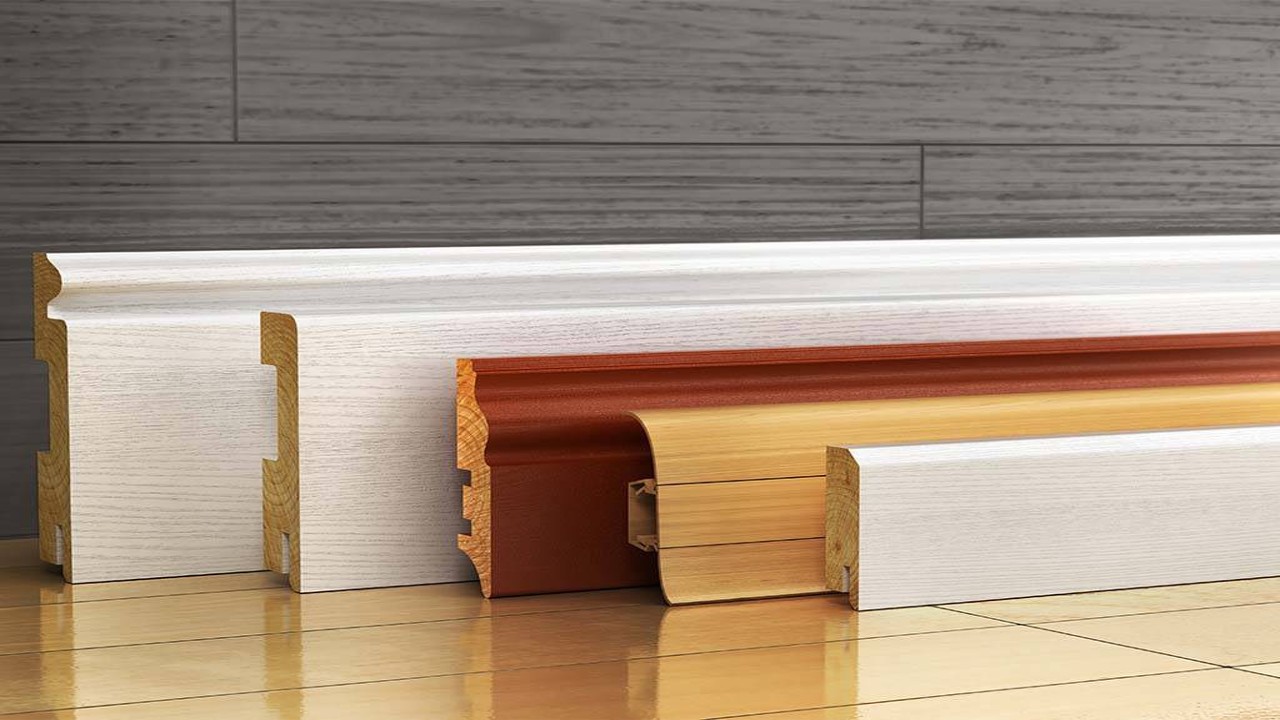
Ceramic Tile Skirting
Because of its adaptability and durability, ceramic tile skirting is a popular option. You may discover the ideal complement for your interior design by choosing from a variety of colours, patterns, and finishes that are offered for these skirting tiles. Because of its reputation for resilience to moisture, ceramic tiles are ideal for splash-prone spaces like bathrooms and kitchens. They guarantee enduring beauty in your home because they are simple to keep and clean.

Porcelain Tile Skirting
Porcelain tile skirting gives your room a streamlined and sophisticated appearance while being quite durable. Due to their high manufacturing temperatures, these tiles are highly thick and moisture, stain, and scratch resistant. You have many possibilities to improve your design scheme with porcelain skirting tiles because they are available in a variety of styles, including matte, glossy, and textured surfaces. Porcelain tile skirting is a sensible option for high-traffic areas because of its sturdiness and visual appeal.
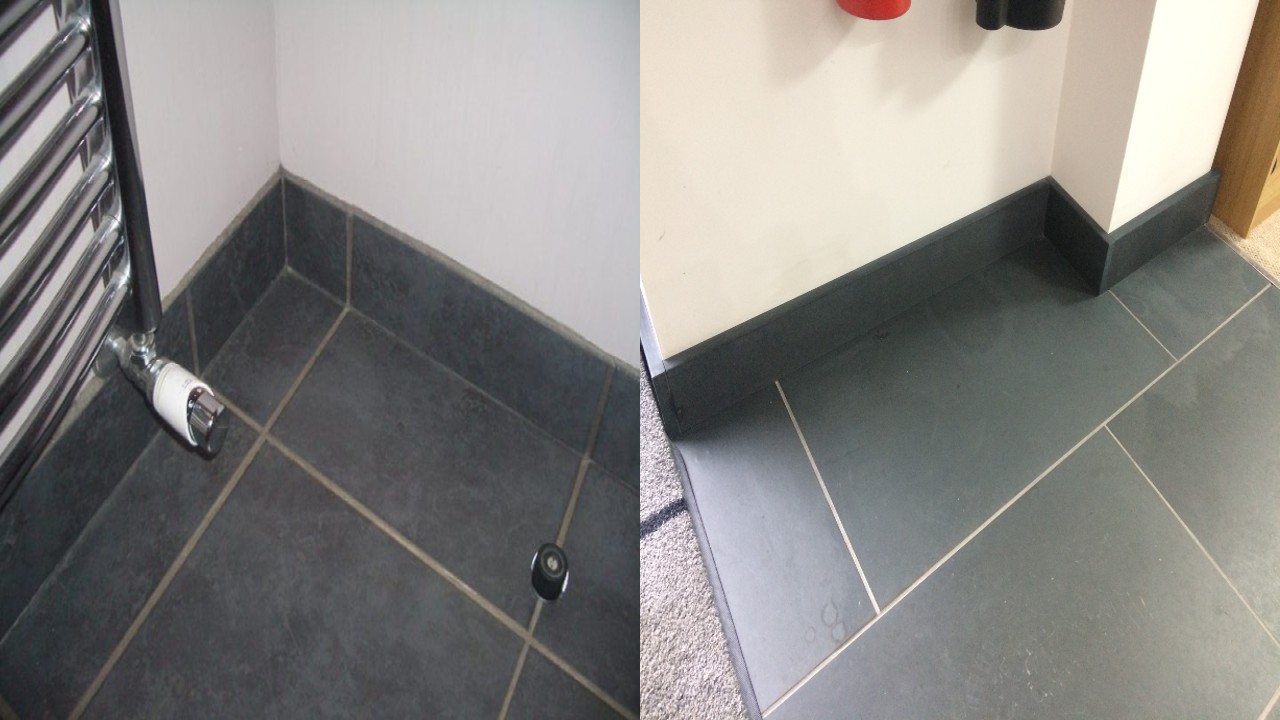
Natural Stone Tile Skirting
Natural stone tile skirting is a great choice if you want an opulent and classic appearance. Marble, granite, and travertine are examples of stone materials that have distinctive textures, patterns, and colours that elevate any setting. When kept properly, natural stone border tiles are enduring and can weather the test of time. They add a feeling of majesty and natural beauty, making them a focal point in your home design.
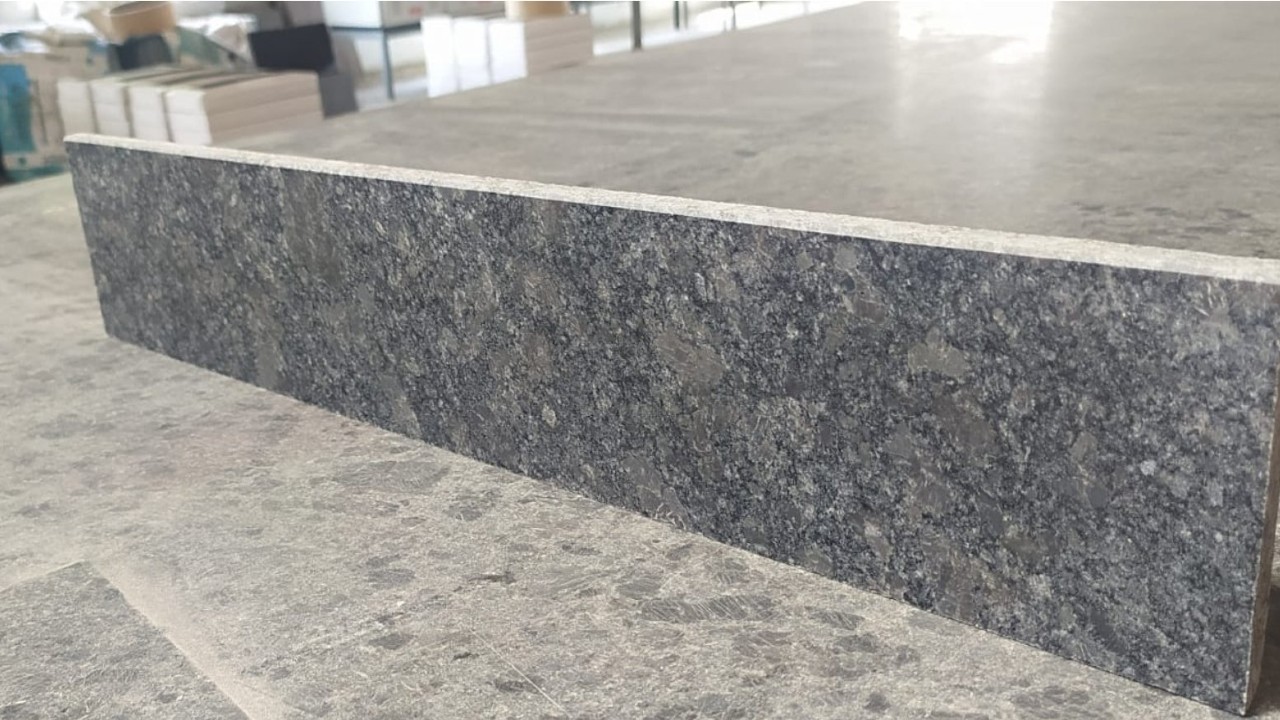
Glass Tile Skirting
Glass tile skirting gives your room a modern and eye-catching feature. There are countless design options available because to the variety of shapes, sizes, and colours available in these tiles. Glass skirting tiles are perfect for tiny spaces because they reflect light and provide the impression of more space. They are a good option for bathrooms and kitchens since they are moisture-resistant and simple to clean. Glass tile skirting gives your room a contemporary, sleek look that adds a bit of glitz.
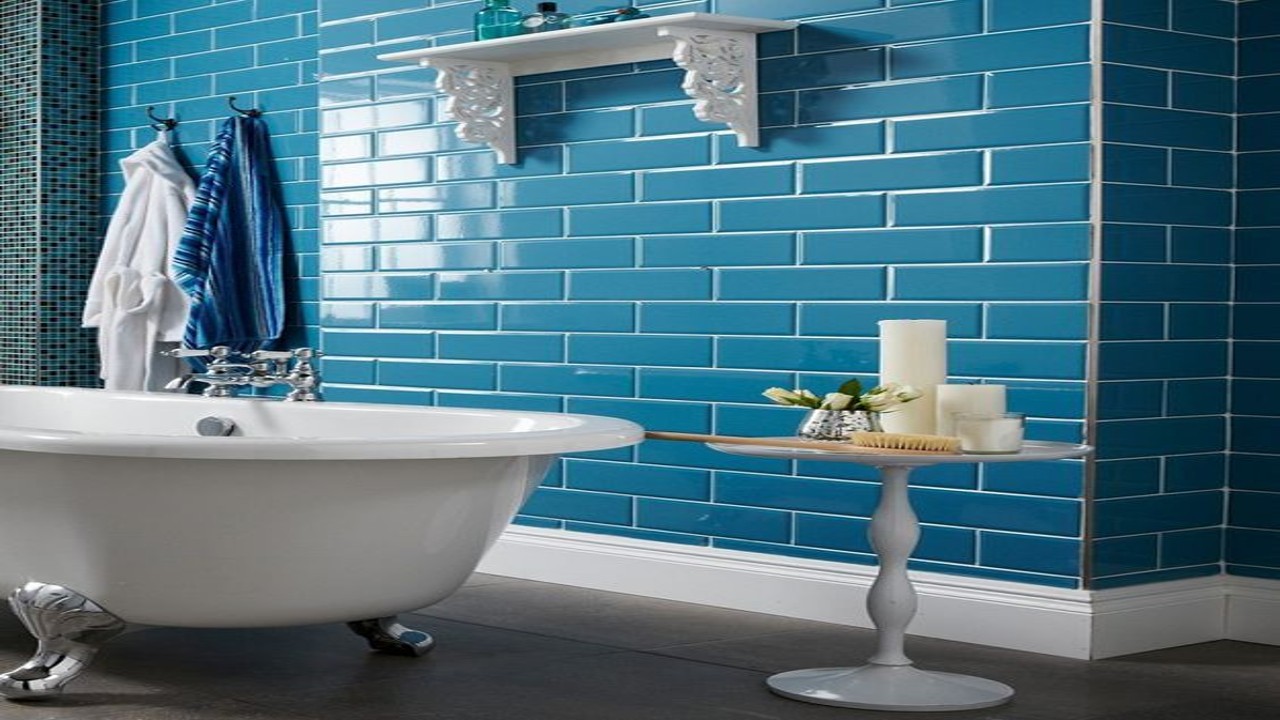
Mosaic Tile Skirting
The skirting made of mosaic tiles gives a unique and beautiful way to improve the interior style of your home. Small bits of various materials, including glass, stone, ceramic, or metal, are combined in complex patterns to create these tiles. You may add distinctive patterns, hues, and textures to your room with mosaic skirting tiles and make a strong statement. Mosaic tile skirting may provide a visually attractive aspect to your walls, whether you like a traditional or modern aesthetic.
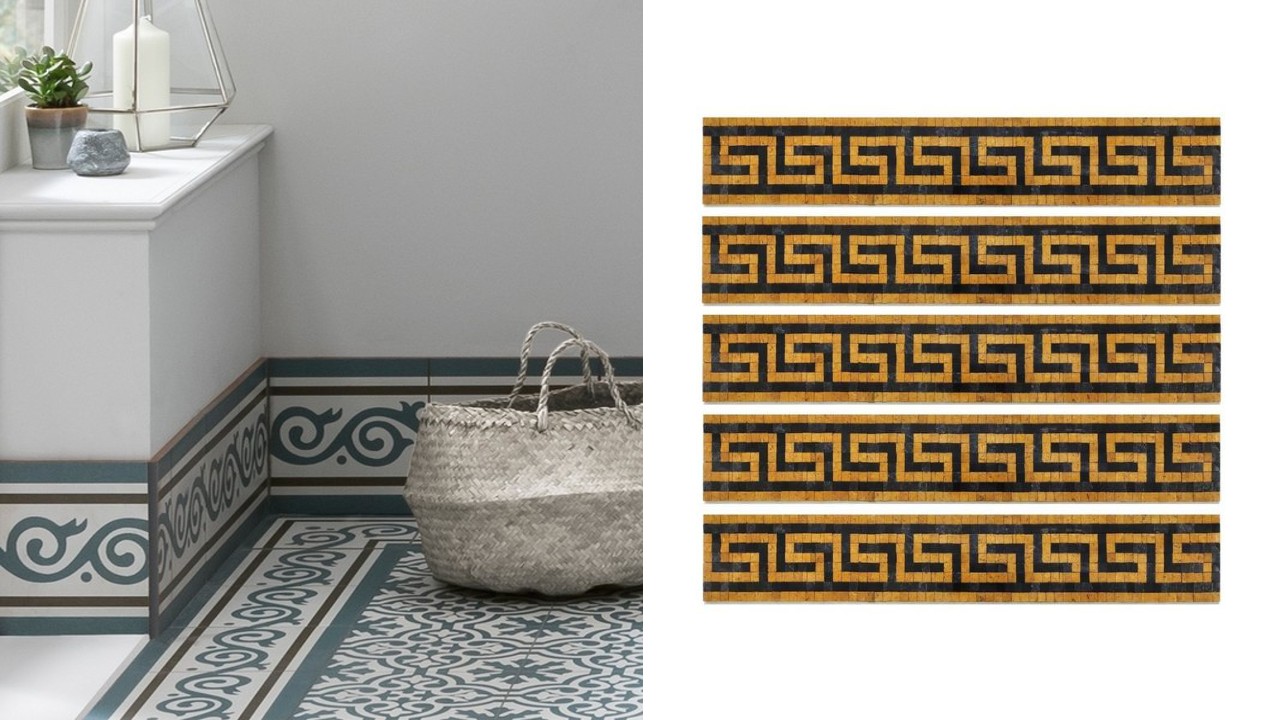
Metal Tiles Skirting
A contemporary and chic choice to improve your home decor is metal tile skirting. Metal border tiles have a distinctive visual appeal that may completely alter any space thanks to its durable design and elegant look. We shall examine the features, advantages, and design options of metal tile skirting in this post.
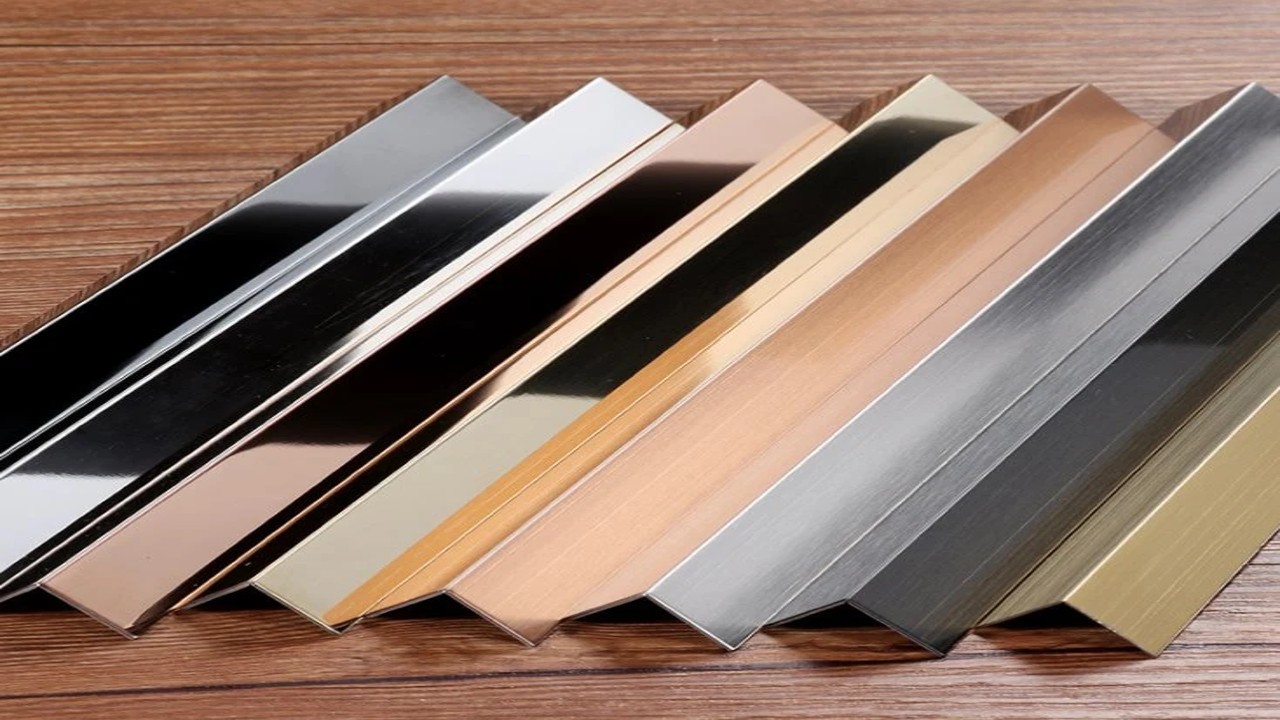
Wood Tiles Skirting
Wood tile skirting is a classic and adaptable choice that adds cosiness and unspoiled beauty to your home design. Wood skirting tiles offer countless opportunities to improve the appearance of your area because to the variety of wood species, finishes, and designs that are available. We shall examine the features, advantages, and design possibilities of wood tile skirting in this post.
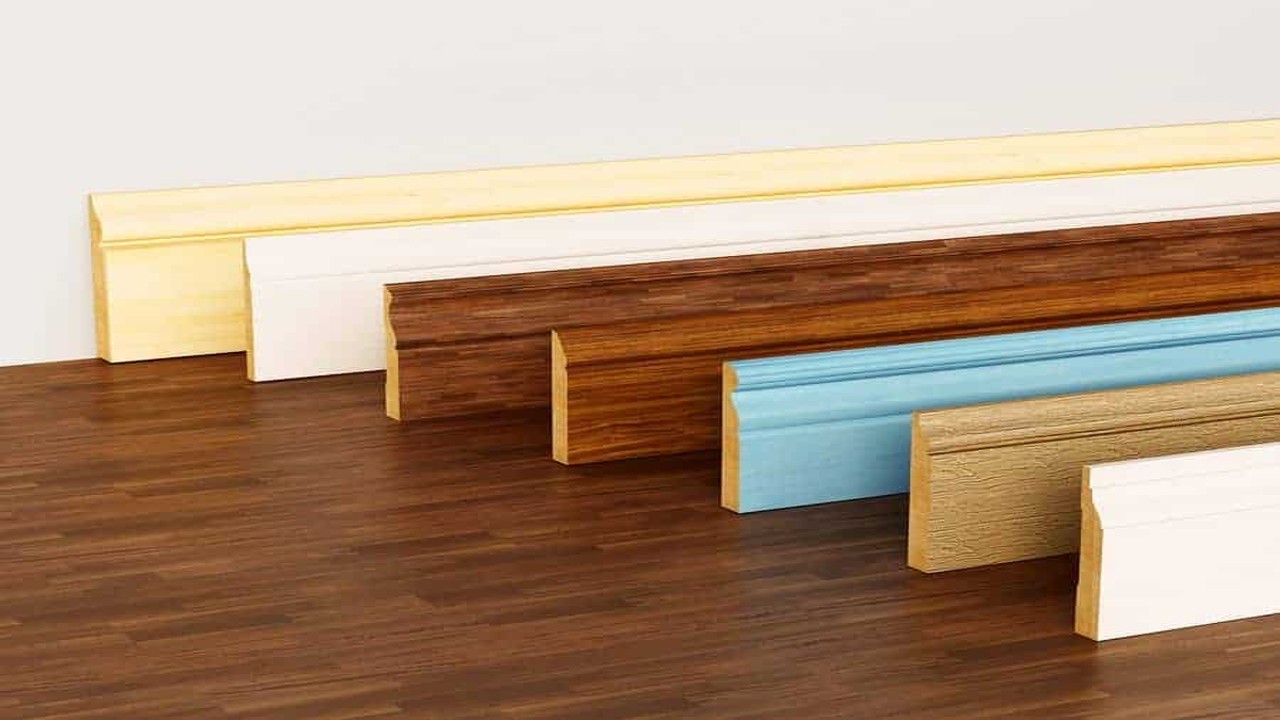
Uses of Tiles Skirting
Tile skirting has many uses in interior design and may enhance your space both aesthetically and functionally. Tile skirting is important in achieving a polished and coordinated appearance since it protects walls and adds a finishing touch. In this post, we’ll examine the numerous applications for tile skirting and how they might improve the look of your home.
Wall Protection
Protecting the lower area of walls from potential harm is one of the main goals of tile skirting. Skirting tiles serve as a barrier, protecting the walls from dings, scrapes, and impacts brought on by household items like vacuum cleaners or furniture. You may maintain the integrity and aesthetic appeal of your walls by placing skirting tiles, which will lessen the frequency of repairs or repainting.
Seamless Transition
Tile skirting offers a smooth transition from the walls to the flooring, giving the area a polished appearance. It gives the illusion of being polished and cohesive by hiding any irregular gaps or flaws between the two surfaces. The border tiles serve as a link between the various interior design components, giving the room a feeling of consistency.
Aesthetic Enhancement
The overall aesthetic appeal of your interior design is enhanced with tile skirting. You may select skirting tiles to match the design and decor of your area from a variety of tile selections. Skirting tiles are available in a variety of hues, designs, and finishes to match your aesthetic tastes, whether you like a contemporary, classic, or eclectic appearance. The appropriate skirting tile selection may enhance your space’s aesthetic effect and offer a touch of class and charm.
Design Accent
You may add intriguing patterns or textures to your home by using tile skirting as a design accent. To add visual interest or to create a focal point, think about utilising mosaic or colourful tiles for the skirting. The skirting tiles’ decorative accent may improve your space’s overall appearance, making it more eye-catching and distinctive.
Maintenance Ease
Tile skirting has aesthetic advantages as well as being reasonably simple to keep clean and maintain. Skirting tiles are less susceptible to stains or discoloration than walls. To keep them appearing clean and appealing, simply dust them frequently and give them a light cleaning every now and again. Skirting tiles are a sensible option for time-pressed homeowners who want to keep their homes tidy and clean because of this low-maintenance quality.
- Also Read: 20 Modern Kitchen Wall Tile Design Ideas for every Home Décor
- Also Read: Installing PVC Vinyl Flooring in 6 Steps: A Comprehensive Guide
Application of Tiles Skirting
Tile skirting is a flexible design feature that may be used in a variety of interior settings. Tile skirting provides a finishing touch while shielding walls from harm thanks to its practical and aesthetically pleasing qualities. This article will examine the many settings in which tile skirting may be used and the ways in which it improves the overall beauty of your interior design.
Residential Spaces
Tile skirting is frequently utilised in rooms including living rooms, bedrooms, kitchens, and bathrooms in domestic settings. It acts as a barrier to stop impact from furniture or cleaning tools as well as scuffs, scratches, and other dings. Another benefit of tile skirting is that it creates a smooth transition between the flooring and the walls, giving the area a polished appearance. Skirting tiles may increase the attractiveness of your living areas and compliment your overall aesthetic, whether it be modern, classic, or eclectic.
Commercial Spaces
Offices, retail stores, hotels, and restaurants are just a few of the commercial places where tile skirting is used. Tile skirting in these environments has both practical and aesthetically pleasing uses. Along with giving the area a clean and professional appearance, they shield the walls from harm brought on by heavy machinery, trolleys, or excessive foot traffic. Skirting tiles may be made to order to fit the brand or design motif of the business enterprise, helping to create a unified and welcoming environment.
Hospitality Settings
In the hospitality sector, where establishments like hotels, resorts, and guesthouses operate, tile skirting is essential to preserving a pristine and opulent atmosphere. Skirting tiles maintain the lifespan and aesthetic appeal of the interior surfaces by shielding the walls from bags, carts, and cleaning supplies. Additionally, skirting tiles may be selected to blend in with the establishment’s general design theme, giving visitors a warm and enticing environment.
Educational Institutions
Schools, colleges, and universities all frequently use tile skirting in their buildings. When skirting tiles are utilised in these situations, the walls are better protected from wear and tear brought on by students’ actions like shifting chairs or rubbing backpacks against the walls. Skirting tiles also help to maintain a neat and orderly look, which promotes a positive learning environment.
Healthcare Facilities
Hospitals, clinics, and nursing homes are examples of healthcare institutions that might benefit from the use of tile skirting. Skirting tiles ensure a clean and well-maintained environment by shielding the walls from harm caused by gurneys, trolleys, and medical equipment. Additionally, border tiles may be selected to complement the general design concepts of healthcare facilities, fostering a relaxing environment for patients and guests.
Installation of Tile Skirting: A Step-by-Step Guide
Simple equipment and a little perseverance are all that are required to complete the installation of tile skirting. Following a step-by-step manual may assist assure a successful installation, regardless of whether you’re an experienced DIY enthusiast or a first-time homeowner. We’ll give you a thorough walkthrough of the tile skirting installation process in this post.
Gather the Necessary Tools and Materials
Make sure you have all the required equipment and materials before starting the installation procedure. What you’ll need is as follows:
- Skirting tiles of your choice
- Measuring tape
- Level
- Tile adhesive
- Notched trowel
- Tile spacers
- Tile cutter or wet saw
- Grout
- Grout float
- Sponge or cloth for cleaning
Ensure that you have everything on hand before starting the installation.
Prepare the Walls
Prepare the walls by washing them carefully before applying glue. Use a moist cloth or sponge to remove any dust, grime, or debris. Make sure the walls are dry and clear of any wallpaper or loose paint.
Measure and Cut the Skirting Tiles
The length of the walls where the skirting tiles will be installed should be measured. Use a tile cutter or wet saw to make accurate cuts after marking the measurements on the tiles. Make sure the tiles are evenly spaced throughout the length of the wall.
Apply Tile Adhesive
Apply tile glue to the skirting tiles’ backs using a notched trowel. To ensure complete covering, properly distribute the adhesive. Starting at one end of the wall and working your way to the other, press the tiles firmly into place. To keep the gap between the tiles uniform, use tile spacers.
Check for Levelness
Use a level to verify for levelness once a few tiles have been installed. If required, move the tiles to achieve a straight and equal placement. Install the remaining tiles as you go, making sure they are level along the way.
Allow the Adhesive to Dry
After all of the skirting tiles have been put in place, let the adhesive cure per the manufacturer’s recommendations. Normally, this takes 24 to 48 hours. To achieve a solid binding, stay away from touching or disrupting the tiles during this period.
Apply Grout
Time to apply grout when the glue has cured. In accordance with the manufacturer’s instructions, mix the grout. Spread the grout over the tile joints with a grout float, making sure to fill up any gaps. A wet sponge or towel should be used to remove any extra grout.
Clean and Finish
Tiles should be cleaned with a moist sponge or towel to remove any remaining grout once the grout has cured. To give the tiles a polished appearance, clean them.
Enjoy Your New Tile Skirting
You can appreciate the beauty and usefulness of your new tile skirting once the installation procedure is over and the tiles are dry and clean. Enjoy the improved beauty and security it gives your walls.
- Also Read: Calculate Quantity Of Tiles For Flooring
- Also Read: Quantity Of Tiles For Wall & Cladding
Maintenance of Tile Skirting: Keeping Your Skirting Tiles Looking Fresh
The utility and aesthetic appeal of tile skirting must be properly maintained throughout time. You can make sure that your border tiles stay in immaculate shape by giving them routine cleaning and attention. You may find helpful hints and instructions for maintaining tile skirting in this post.
Regular Cleaning
Maintaining the appearance of your border tiles requires routine cleaning. The surface may get clogged with dust and dirt, detracting from its aesthetic appeal. Remove any loose dust or debris from the border tiles using a soft brush, broom, or vacuum with a soft brush attachment. Observe the edges and corners where dirt likes to collect. Use a light detergent or a tile cleaner that the manufacturer suggests for tough stains. Avoid using strong chemicals or abrasive products that might damage the tiles’ surface.
Wiping Spills Immediately
Spills can occur unintentionally, especially in spaces like kitchens or toilets. To avoid discoloration or damage, spills on the border tiles must be cleaned up very away. To gently blot the spill and get rid of any leftover material, use a moist cloth or sponge. Avoid forcefully rubbing the spill to prevent spreading the stain or damaging the tiles. The integrity and aesthetic appeal of the skirting tiles will be preserved with prompt intervention.
Protecting Against Scratches
Take care while moving furniture or other items close to the walls to avoid scratching the skirting tiles. To reduce the chance of scratching, lift furniture rather than dragging it, and put coasters or furniture protectors on the legs. Avoid using tools that might potentially harm the tiles’ surface, such as sharp or abrasive ones. By following these preventative steps, you may prevent unsightly scratches on your skirting tiles and preserve their aesthetic value.
Inspecting for Damage
Check your border tiles often for any signs of wear or damage. Look for any loose tiles, chips, or cracks that may need to be repaired or replaced. Quickly taking care of these problems can protect the longevity of your skirting tiles and stop additional damage. Consult a qualified tile installer or get in touch with the manufacturer if you see any damage for advice on how to replace or repair it.
Sealing (If Required)
To prevent stains and moisture intrusion, some varieties of skirting tiles, such as porous or natural stone, may need to be sealed. To find out if your border tiles need to be sealed and how frequently, consult the manufacturer or a tile expert. For information on the proper sealant to use and how to apply it, go to the manufacturer’s instructions.
Regular Maintenance Schedule
Create a timetable for routine skirting tile maintenance. You might need to clean and examine the tiles on a weekly, monthly, or quarterly basis, depending on the location and degree of use. Your skirting tiles will stay in top shape and preserve their aesthetic value for many years if you maintain them consistently.
Costing of Tiles Skirting
The type of tiles, the amount needed, labour costs, and other charges must all be taken into account when calculating the cost of tile skirting. In order to create an exact budget for your skirting project, it is important to have a comprehensive grasp of these aspects. In this post, we’ll give you some tips on how much tile skirting costs and provide you an example to show you how much it costs.
Factors Affecting the Cost of Tile Skirting
Type of Tiles: Depending on the material used, skirting tile prices might change. Natural stone, glass, metal, ceramic, and porcelain are typical choices. Each material has a different pricing range depending on the quality, accessibility, and complexity of the design.
Quantity: The total cost of your project will be influenced by the number of skirting tiles required. Based on the space’s measurements, determine the linear footage or the quantity of square feet needed for skirting. To account for possible installation mistakes, it is preferable to buy a few extra tiles.
Labor Costs: Labour fees will be included in total prices if you decide to employ experts to do the installation. The labour expenses will depend on the project’s intricacy, how long installation will take, and local labour costs.
Additional Materials: In addition to the skirting tiles, extra supplies are needed for installation. This covers grout, tile glue, and any other necessary equipment or accessories. The cost as a whole is impacted by these extra materials.
Design Complexity: Due to the added work and skill needed in their creation, intricate designs or patterns in skirting tiles may cost more. Additionally, speciality tiles or customised designs could cost more than more affordable ones.
Location: Depending on where you live and the supply of materials, skirting tile prices might change. Prices may vary from one place to another as a result of things like shipping expenses and regional market trends.
Example of Costing for Tile Skirting
Let’s use an example to show how much tile skirting costs. Consider installing ceramic skirting tiles, which typically cost $5 per linear foot, in a space with a circumference of 30 feet. 30 linear feet of skirting tiles are needed for the space.
- Cost of Skirting Tiles: 30 feet x $5/foot = $150
Next, consider the additional materials required for the installation:
- Tile Adhesive: $20
- Grout: $15
The cost of the labour, assuming you employ an expert to do the installation, may change depending on your region and the project’s intricacy. Let’s say that the labour expense in this case is $150.
- Labor Cost: $150
Taking all the expenses into account, the total cost of tile skirting for this example would be:
- Total Cost = Cost of Skirting Tiles + Additional Materials + Labor Cost
- Total Cost = $150 + $20 + $15 + $150 = $335
Remember that this is just an example, and actual costs may vary based on individual circumstances and the specific factors mentioned earlier.
- Also Read: Tremix Flooring or VDF: Design, Installation, Benefits, Application, Costing
- Also Read: Epoxy Grout vs. Cement Grout vs. Cement Mortar: Decoding the Variations
- Also Read: Lemon Kitchen Décor: Adding Zesty Charm to Your Culinary Space 2023 New!
Conclusion
Interior design is not complete without tile skirting, which combines both practicality and beauty. It adds visual attractiveness between the floor and the wall, protects walls from damage, and hides unsightly wiring. Tile skirting offers adaptability and customization possibilities to fit different areas and design preferences because to the variety of styles, patterns, and materials available.
Also Watch
Source: Civil Engineer Mukesh Sah
Frequently Asked Questions – FAQs
What is the purpose of tiles skirting?
Tile skirting acts as a beautiful transition between the floor and the wall while also serving to protect walls from harm.
Can tiles skirting be installed in wet areas like bathrooms?
Yes, certain types of tiles, such as porcelain and natural stone, are suitable for wet areas due to their moisture-resistant properties.
How often should tiles skirting be cleaned?
To keep the beauty of the tile skirting, it is advised to clean it frequently with a moderate detergent.
Can tiles skirting be replaced without damaging the wall?
Yes, tiles skirting can be replaced by carefully removing the damaged tiles and installing new ones using appropriate adhesive.
Is professional installation necessary for tiles skirting?
Tile skirting installation is a DIY project that can be done, but professional installation provides accurate alignment and a smooth finish.
